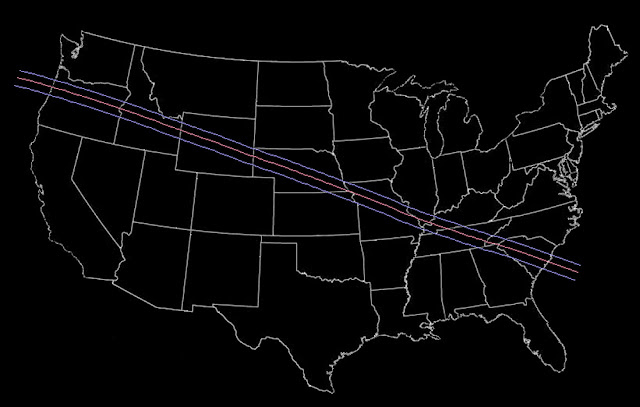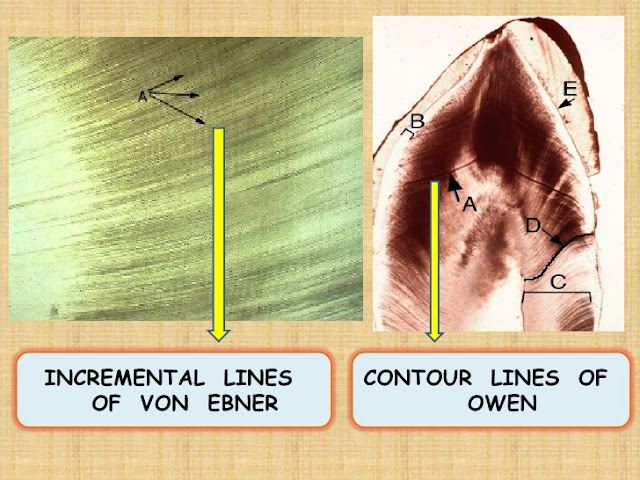A friend from the Environmental Protection Agency (EPA) sent this article by Scott K. Johnson to several of us on his contact list. He wants to be sure the word gets out. The article, published 1/23/17, discusses past, present, and future sea level rise based on chemical data from rock cores from around the world.
Thus, in the spirit of rogue US National Park rangers, I am spreading the word. You can read more about and sign up for updates from the "Alternate National Park Service" here.
Researchers at Oregon State University led by Dr. Jeremy Hoffman, collected 104 individual sea surface temperature records from 83 different sediment cores. Each record is based on a "chemical proxy" known to relate to water temperature, like the ratio of magnesium to calcium in the shells of foraminifera.
A lot of the complicated work involved is precisely lining up each core record onto one timeline, synced to ice core records, and carefully calculating the uncertainties (much like lining up wood cores in dendrochronology).
The article notes that our sea temperature is now about the same as it was 120,000 years ago during the last interglacial heat maximum. Based on the rock record, the oceans were then 6 to 9 meters (19.5 to 29.5 feet) higher than present time.
"If the planet stopped warming and stayed where it is today, the past gives us an idea of how much sea level rise we could expect to see in the long-term future. It would take much more than a century to complete that rise, but we are looking at well over five meters rise in elevation in the ocean." {This link lets you look at sea level rise at various levels around the world.}
DT, are you sure you and your heirs want to keep staying in Manhattan when this happens? Could it be that glacial ice is giving you a hand signal that we all (including you) really need to attend to now?!
Keep rising up, scientists and writers!
Steph
P.S. I just ordered a "RESIST" t-shirt for $11 from woot.com, designed by my friend's nephew. It's important to be a resistor now more than ever. . .
Make Way for Ducklings by Robert McCloskey was one of my favorite childhood books. It is the Official Children's Book of the Commonwealth of Massachusetts. The beautiful illustrations were executed in charcoal then lithographed on zinc plates.
Jack, Kack, Lack, Mack, Nack, Ouack, Pack, and Quack were treasured, feathered friends. (I thought Ouack was cool because she or he had two syllables (as I read it) as well as three vowels in a row!) Here they are, in bronze, created by Nancy Schön in the Boston Public Garden with Mrs. Mallard in Boston, USA, sporting pink pussy hats.
My friends and I are working on getting all our ducks in a row tonight for tomorrow's Denver Women's March. Organizing, making signs, hats, and banners, and preparing for the day has helped us keep focus on important issues like climate change (which has suddenly disappeared from the Presidential sites). Yeah, sure, that's one way to get rid of it. . . (but the temperature data say otherwise, showing 2016 as the hottest year since records have been regularly kept):
Here's hoping for a peaceful march in Denver tomorrow with lots of nasty, wonderful women and men energy. We may even see the big blue bear in a pink pussy hat at the Denver Convention Center.
I will be marching with my grandmother, Irene's, strength and spirit. She was a suffragette who walked in the Boston and NYC marches for the right for women to vote. I am marching for many reasons but this sign sums up a major one:
Hoping things will come full circle and stabilize for those more northerly polar bears and for the mallards and ducklings in many ways in the weeks and months to come. Seeing those bears all in a row on giant ice fields in polar climes would make many Mama Bears content.

Here's to a productive, calm day wherever you are,
Steph
Some images (one for each duckling and one each for Mrs. and Mr. Mallard) from the powerful Denver March of over 200,000 women, men, babes in arms, and canines. Enjoy!
^^^"Trumpeters against Trump"
And, as promised from before the march:
Badlands National Park goes rogue with climate facts from the official Twitter account:
This! --->
This week's Partial Ellipsis of the Sun will focus on the ellipsis in our blog title as well as the upcoming solar eclipse, visible in the U.S. on August 21, 2017.
I discovered this week that three dots on clothing labels signifies hot, hot, hot (ok, truly just "hot," but you get the idea)
. . .and look at our logo!
Ellipsis, from the Ancient Greek: ἔλλειψις, élleipsis, "omission" or "falling short") is a series of three dots that usually indicates an intentional omission of a word, sentence, or whole section from a text without altering its original meaning (Look! A typewriter!)
Depending on their context and placement in a sentence, ellipses can indicate an unfinished thought, a slight pause, an echoing voice, a leading statement, or a nervous or awkward silence.
Aposiopesis is the use of an ellipsis to trail off into silence, for example: "I wonder about where to go to view the August 2017 eclipse. . ." When placed at the beginning or end of a sentence, the ellipsis can also inspire a feeling of wonder, sadness, or imagining.
The most common form of an ellipsis is a row of three periods or full stops (. . .)
or a precomposed triple-dot glyph (…). The triple-dot punctuation mark is also called a suspension point, points of ellipsis, periods of ellipsis, or colloquially, framed as "dot-dot-dot".
In Anne Toner's book on the ellipsis, Ellipsis in English Literature: Signs of Omission she suggests that the first use of the punctuation in the English language dates to a 1588 translation of Terence's Andria, by Maurice Kyffin. In that case, however, the ellipsis consists not of dots but of short dashes.
There are numerous widely acknowledged types of ellipsis. Nine of them are: 1) gapping, 2) stripping, 3) VP-ellipsis, 4) pseudogapping, 5) answer fragments, 6) sluicing, 7) N-ellipsis, 8) comparative deletion, and 9) null complement anaphora. However, rather than getting into further discussion of these nine types of ellipses. . .
let's move on to the solar eclipse of August 21, 2017.
The eclipse has its own website. Maizie and I are already planning a camping trip with friends to Wyoming to view the eclipse. How about you? Will your path cross with the solar eclipse. . .?
Only 219 days to go!
Steph
Wow! { { { Photograph by Walker Berg, Oregon: CROWS ON SNOW} } }
The mystery of why the dinosaurs became extinct after a Cretaceous meteor strike, while birds and mammals thrived, may have been solved.
Paleontologists have discovered that dinosaur young took so long to hatch and mature into adulthood that populations failed to recover quickly enough after the devastating impact 65 million years ago.
In contrast, birds and small mammals took only a few weeks for their offspring to emerge giving them a distinct advantage.
The discovery was made by researchers at Florida State University and the University of Calgary, who realized it was possible to calculate how long it took for dinosaurs to hatch based on marks on the teeth of embryos and babies.
Similar to tree rings growing a new layer each year, teeth grow a new layer each day, which is seen in microscopic lines in the dentine. By counting the daily lines of Von Ebner, scientists found it took dinosaurs between three and six months to hatch.

The lengthy incubation period in the clutches of dinosaur eggs, in comparison to small mammals, made the hatchlings, and their parents, vulnerable to predators and left them struggling to re-establish their species.
“Some of the greatest enigmas about dinosaurs pertain to their embryology; virtually nothing is known,” Dr. Gregory Erickson of FSU said. “We suspect our findings have implications for understanding why dinosaurs went extinct at the end of the Cretaceous period, whereas amphibians, birds, mammals and other reptiles made it through and prospered.”
Because birds are in the same clade with dinosaurs, scientists have long assumed that the duration of dinosaur incubation was similar to birds, whose eggs hatch within 11 to 85 days.
However, similar-sized reptilian eggs typically take twice as long to hatch, ranging from several weeks to many months. To find out where dinosaurs fit in, the team studied the fossils of dinosaur embryos.
“Time within the egg is a crucial part of development, but this earliest growth stage is poorly known because dinosaur embryos are rare,” said Dr. Darla Zelenitsky of the U of Calgary. “Embryos can potentially tell us how dinosaurs developed and grew very early on in life and if they are more similar to birds or reptiles in these respects.”
The two types of dinosaur embryos researchers examined were those from a Protoceratops, (seen below) a goat-sized dinosaur found in the Gobi Desert of Mongolia whose eggs were chicken-egg-sized and Hypacrosaurus, a gigantic duck-billed dinosaur found in Alberta, Canada, with eggs weighing 4 kilograms (9 pounds.)
The researchers ran the embryonic jaws through a CT scanner to visualize the forming dentition. Then, they extracted several of the teeth to examine with a Scanning Electron Microscope (SEM).
Their results showed nearly three months incubation for the small Protoceratops embryos and six months for the embryos from the giant Hypacrosaurus (below).
Dental battery (the complex set of six-layered dinosaur teeth including replacement teeth) and von Ebner lines in fossil dinosaur teeth were first observed and illustrated over 150 years ago by Richard Owen (shown below), the scientist who coined the term Dinosauria or "Terrible Lizard."
I wonder if Dr. Owen would have given his eye teeth to change that moniker to Dinopoulia, Greek for "Terrible Bird."
It's Clutch Time, in more ways than one!
Steph






















































